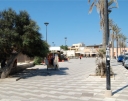- home
- » --- nuova scheda ---
- » Comuni
- » Campobello di Mazara
Campobello di Mazara
Expanses of cultivated fields predominantly of olive groves and vines characterise the landscape of Campobello di Mazara. The countryside and agricultural life has always characterised the history and economic vocation of the town. Today, this tradition is remembered by the Museo della vita e del lavoro contadino - Museum of rural life and work which offers the visitor examples of ancient trades and agricultural traditions which are no longer in use. However, it is to the presence of the historical Cusa Quarries that Campobello owes its fame. From this extraordinary place, where fascinating archaeology is united with a beautiful natural landscape, the people of Selinunte extracted the elements used to construct the enormous columns which supported their temples. Here, the extraction work seems to be unfinished, in a suspension of time which makes the site extremely fascinating and suggestive.
Expanses of cultivated fields predominantly of olive groves and vines characterise the landscape of Campobello di Mazara. The countryside and agricultural life has always characterised the history and economic vocation of the town. Today, this tradition is remembered by the Museo della vita e del lavoro contadino - Museum of rural life and work which offers the visitor examples of ancient trades and agricultural traditions which are no longer in use. However, it is to the presence of the historical Cusa Quarries that Campobello owes its fame. From this extraordinary place, where fascinating archaeology is united with a beautiful natural landscape, the people of Selinunte extracted the elements used to construct the enormous columns which supported their temples. Here, the extraction work seems to be unfinished, in a suspension of time which makes the site extremely fascinating and suggestive.
LANDSCAPE
The landscape is full of colour. One is welcomed into the town by the Sciare, a length of rocky ground whose name comes from the Arab, dry earth, where there is a low vegetation which is able to grow only in the concave areas where the debris of the surrounding rock collects. The dwarf palm is certainly the most widespread species. The lush countryside is covered mainly by ordered lines of olive trees, vines, citrus fruit trees and fields of vegetables cultivated as if they were in gardens. Moving west there is the Cusa quarries where the vegetation is Mediterranean scrub. Straight after, towards Tre Fontane, the dunes begin which, in Spring, become coloured in pink thanks to the Silene colorata (pink pirouette) and white from the flowers of the sea daffodil. Towards the south west there is the rocky coastline of Torretta Granitola with suggestive fishing villages.
HISTORY
Campus Belli is the name given by the Romans to the place where the battle between Segesta and Selinunte took place, in Campana San Nicola district , a name which was then extended to the the town. The inhabited centre originated in 1618 when Don Giuseppe di Napoli had two long lines of colonial houses built near his castle next to which a Dominican monastery already existed, in correspondence to the present streets: via Garibaldi, via Badiella and viale Risorgimento. The Arabs landed In Capo Granitola in 827, thus beginning their conquest of Sicily, and they called the area Ras al Balat. In Birribaida (in Arabic white tower- house) district, according to historic fonts the hunting lodge of Federico II , called Bellumrepar was to be found. In 1893 in Campobello the fascio (a popular democratic and social movement) - was established, presided over by Vito Denaro, with the strong intention to re-establish dignity to the workers downtrodden by the landowners.
NATURE
Once the flora was rich and varied. The name of certain localities include the word bosco - wood (bosco Tre Fontane, bosco Angilluffo, bosco Guardiola, bosco Nuovo, bosco Vecchio) and indicates that the southern area of the town was rich in trees which over time have been substituted by the new cultivations of vines, olive trees and citrus fruit trees. In particular, the woodland vegetation was characterised by cork oaks inland and by poplars, on the coastal dunes. These woods, also made up of mastic, broom, and tamarisk form an impenetrable vegetation about four miles in width from Tre Fontane to Manica Longa. The cork oaks have almost completely disappeared: only some specimens survive on small remaining strips of original vegetation still present in the cultivated fields. More botanic evidence is represented by the remaining wood of Poplars, near the coast on the dunes of Tre Fontane. The reduction of woods and scrub in favour of increasingly large agricultural areas has caused the progressive reduction and disappearance of wild animals, including the wolf.The filling of the Ingegna lake in 1906, because the marshy waters caused malaria, also had a great influence on the bird life. But as luck would have it, a depressed area south of the Cave di Cusa, Pantano Leone, was accidentally flooded and is now a protected area. This marsh is now frequented by migratory birds including coots, wild ducks, pink flamingos, stilt plovers, wild ducks and other species. It is a if the birds wanted to replace the old, dried out Ingegna lake with this new lake, as if a memory of this area was passed on down through generations of birds.
ARCHAEOLOGY
The most visible and moving traces from ancient times are to be found in the Cusa Quarries from which the Greek colonies from the nearby Selinunte (founded in the VII century B.C.) extracted 150.000 metres cubed of tuff, which the area is rich in, to make building materials for their cities and magnificent temples.This is an extraordinary place, 11 km away from Selinunte, unique in the archaeological world which creates, with its vegetation, a great suggestive atmosphere: here time has stood still since 409 B.C when Hannibal, son of Giscone, took the inhabitants of Selinunte by surprise, besieged the city and destroyed it.In the quarry area, about. 1,7 Km long , on diverse rough and green levels, the extraction activity and the preparation work and transport of the rocks was interrupted due to the threat of the Carthaginians and never started again: some rough or incomplete stones were left in the state they were in, others which had already been cut and were ready, were left abandoned on the ground, while others which were about to be transported to Selinunte were offloaded along the road. Here one can see the procedure used to carve out, with scalpels and hammers, the blocks used for the columns. The circular incisions in the rock indicate the initial extraction work, which was followed by the deeper digging around the block until it could be extracted; this, once cut, would probably be covered in a wooden framework and transferred onto a solid wagon pulled by oxen. Seeing the deep cuts around the two enormous rocks left attached to the bottom of the calcareous bank and the incisions on the rocks is a moving and suggestive experience. The present name of the quarry (Cusa) refers to an ex-owner Baron Cusa.
MONUMENTS
The oldest buildings of Campobello are the Palazzo ducale, of medieval origin, transformed into noble residences in the XVII century, and the Mother Church, dedicated to Santa Maria delle Grazie. It already existed in the second half of the XVI century and was reconstructed in XVIII and renovated between 1839 and 1848.The Watch tower, which is about 27 metres high, overlooks the town.The town council had the tower built in the Piazza del mercato, and it was inaugurated on the 6th of March 1877; the hourly bell comes from the Palazzo Reale (Royal Palace) of Palermo, while the bell which chimes ever quarter of an hour was made on site by skilled workers from Burgio (Agrigento) . The courtyard-house is a specific characteristic of the territory , a legacy of the Arab culture which greatly influenced the social-economic development of the town. Scattered around the countryside, towers, bagli (rural fortified structures) and a windmill show the agricultural tradition of the territory.
TRADITIONS
The Museo della vita e del lavoro contadino - Museum of rural life and work, the first of its kind in Sicily, founded in 1975, holds the historic memories of a city with a predominantly agricultural vocation. Organised in six cycles it shows the wheat, the wine, the barrel, the house, the barrow, the cheese production and the various jobs connected to the agricultural world, including the cooper, the shepherd, the cordaio. There are numerous tools for ploughing, sowing, harvesting, the grape harvest and wine making. Equally important are the objects destined for the animals. In addition, there is the reconstruction of the inside of a farming house and there are also exhibited the typical objects weaved by craftsmen from the leaves of the dwarf palm, called in Sicilian the giummarra. In the historic and cultural past of the people of Campobello popular games are present such as the gioco delle pignate and l’albero del gallo which are played again during feasts and festivities.
WINE AND FOOD
Secular and regular flourishing olive trees and vines colour the countryside and produce generous amounts of the Nocellara del Belice olive, a PDO olive is perfect for the table and for oil, and fine grapes for wine. The extra virgin oil is a lucid green colour, fluid, and with a characteristically spicy and highly aromatic flavour and aroma: it is excellent to use raw, aromatised, for the preparation of fried food and also in cosmetics. In addition, citrus fruit and fruit trees give excellent products; greenhouse cultivations produce vegetables of characteristic Mediterranean flavours. The pane nero - black bread, has an important place in the traditional cuisine. It is produced with hard wheat flour the so called tumminia a specific variety from this area of the Valle del Belice – with the exclusion of the coarser bran: it is mixed with natural yeast (biga, acidified mixture left over from the day before) and water (50% of the amount of wheat) and is different from other kinds as it is made up of stone-milled wheat and baked in wood ovens. It is also one of a kind for its particularly sweet and delicate fragrance and flavour and it is also perfect eaten on its own. Pecorino is the most important of the cheese produced: it is a hard cheese, of extremely ancient tradition, which is produced in a traditional way exclusively with sheep’s milk. Ricotta is used for the local cakes and pastries, and in its goodness, flavour and freshness it has no equals: typical Easter products are the campanari, pasta rings with hard boiled eggs. Protagonist of the seafood cuisine is fish coming from the water in front of Torretta Granitola: bluefish, mullet, rock fish, and all other types of fish are offered either roast, fried or in soups.
RELIGION REMEMBERENCE BONDS
The Festa del Crocefisso – Crucifix Celebration, is the oldest celebration of the city, and the wooden simulacrum, made by Fra’ Umile da Petralia, kept in the Mother Church and donated by duke Don Giuseppe Napoli e Barresi on the 23rd of May 1666 is greatly venerated; the population was proud of this gift and welcomed the statue with great enthusiasm, singing hymns thanking God and the duke. Today the festivities end with the procession of the crucifix which is carried on the shoulder in a procession on an artistic “vara” (a special plataform) by worshipers. On the 15th June the protector of the city San Vito is celebrated, while on the 15th August there is the suggestive procession at sea of the Immacolata .To honour di Saint Joseph, on the 19th of March, there is the traditional invitation of three people simulating the Sacred Family, to a lunch with numerous dishes in front of a votive altar: a drummer, tammurinaru, plays before the three arrive at the house.
ENTERTAINMENT, SPORT AND FREE TIME
The town has a municipal football pitch and an indoor gymnasium where basketball and volleyball can be practices and there are also some privately owned gyms. Societies and associations promote horse-riding, fencing and boxing: an aquatic park is also a tourist attraction.The maritime village of Tre Fontane with its bathing establishments is frequented by many bathers, many who have chosen to have their summer house here due to the limpid waters. For tourists and people staying here, the town council has realized tennis courts. The gulf of Puzziteddu, between Capo Granitola and the picturesque reef at sea from which it takes its name, is a favourite destination for surfers and windsurfers, and ideal area due to the wind and the air currents which develop there. Swimming pools and football pitches can also be found in privately owned tourist structures.
SHOWS AND EVENTS
In December 2007 Campobello started its Festival dell'oliva d’oro nell'alimentazione, a cultural- exhibitive event aimed at promoting the local specialities with conventions, meetings, exhibitions, guided visits in the town territory and tasting of novello oil and typical products. Fixed appointments are the summer shows in Torretta Granitola and, in the town hamlet of Tre Fontane, the Premio di poesia – poetry prize one of the cultural events recognised on a regional level. An international event was, until some years ago, the Targa Nino Buffa -Dodici ore notturna, a reliability car trial, included in the national circuit, also for the part for classic cars. At the Cave di Cusa Quarries, occasionally, theatre and dance representations are put on with the presence of well known international companies, an the Palio, a traditional horse race.
Events Gennaio 2025
SEE ALL EVENTSThe beauties di (en)Campobello di Mazara
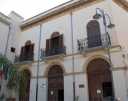 Campobello di Mazara
Campobello di MazaraPALAZZO ACCARDI
Building from XIX century with a courtyard with porticoes, tuff arches.
 Campobello di Mazara
Campobello di MazaraLITORALE TRE FONTANE
The maritime village of Tre Fontane with its bathing establishments is frequented by many...
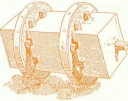 Campobello di Mazara
Campobello di MazaraCAVE DI CUSA
The most visible and moving traces from ancient times are to be found in the Cusa Quarries from...
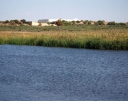 Campobello di Mazara
Campobello di MazaraPANTANO LEONE
Pantano Leone, was accidentally flooded and is now a protected area. This marsh is now...
 Campobello di Mazara
Campobello di MazaraGLI ALTARI DI SAN GIUSEPPE
To honour di Saint Joseph, on the 19th of March, there is the traditional invitation of three...
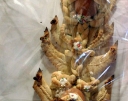 Campobello di Mazara
Campobello di MazaraCAMPANARI
Typical Easter products are the campanari, pasta rings with hard boiled eggs.
Video (en) del comune (en)
TUTTI I VIDEO (en)virtual tour
Vedi anche (en)
- monumenti e musei



























